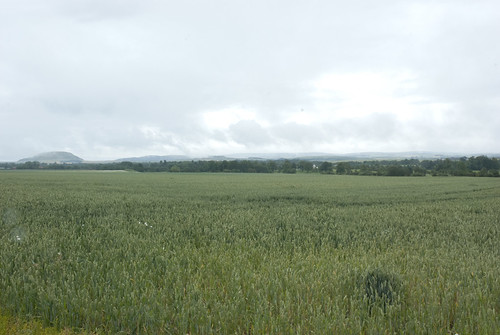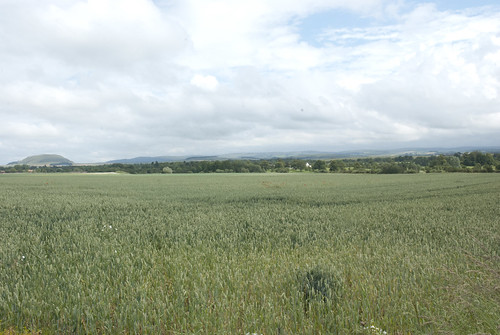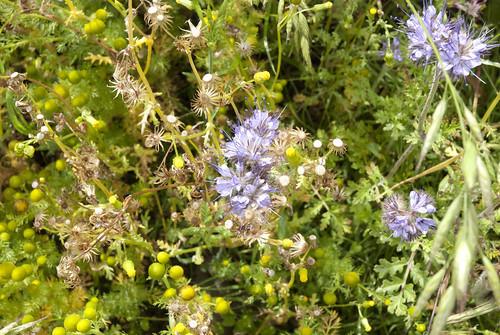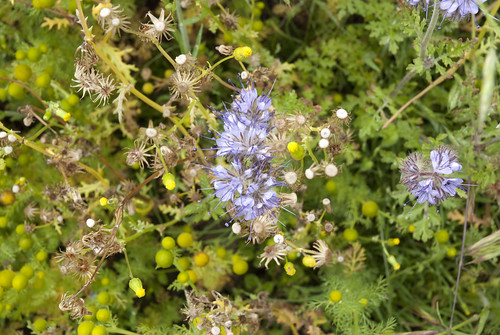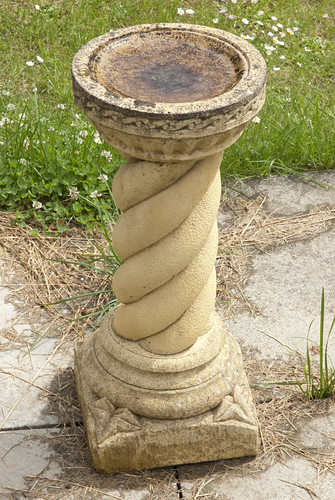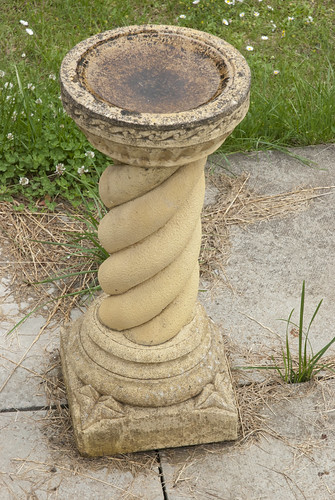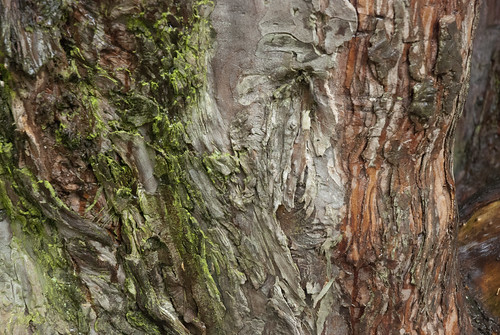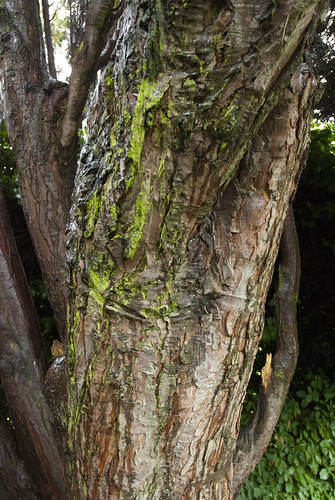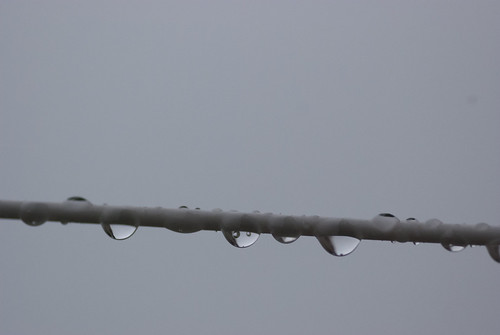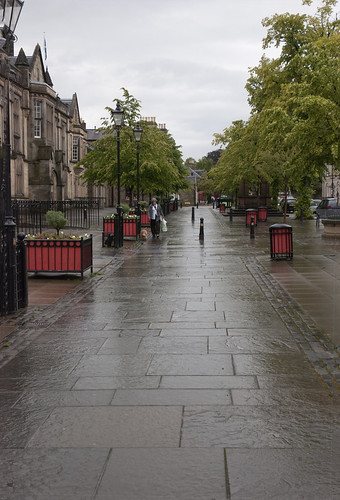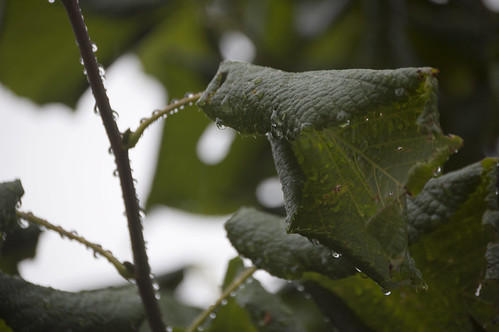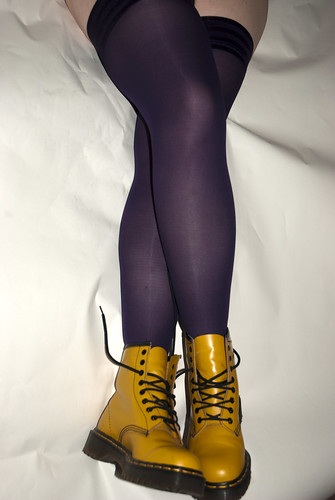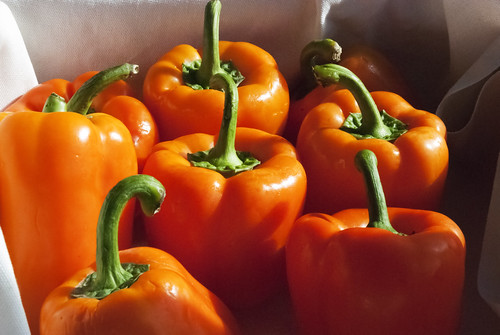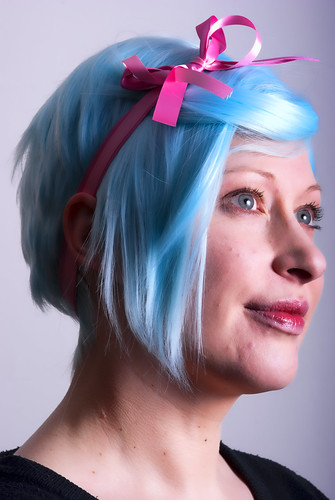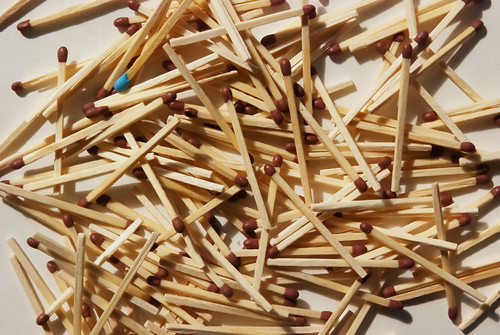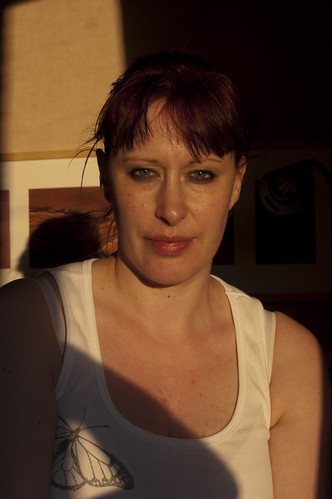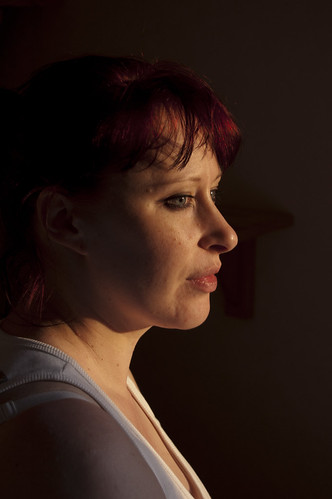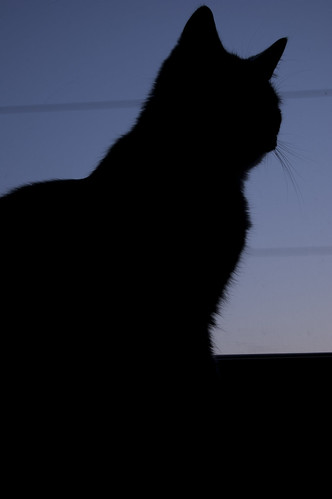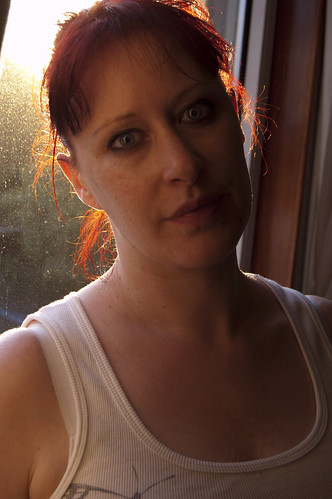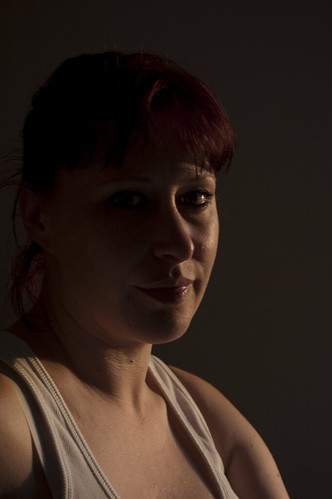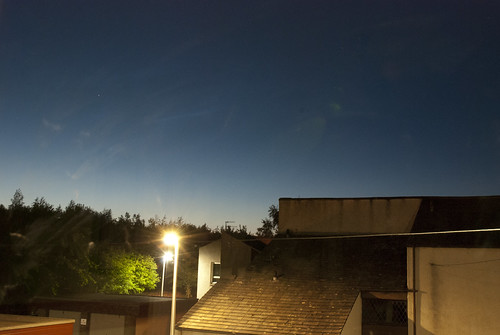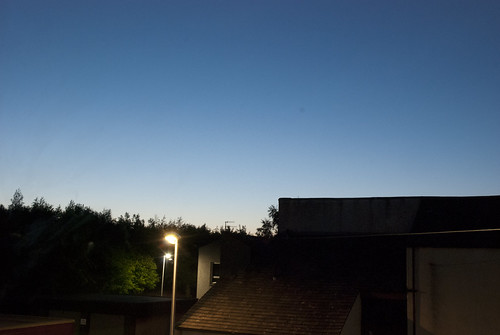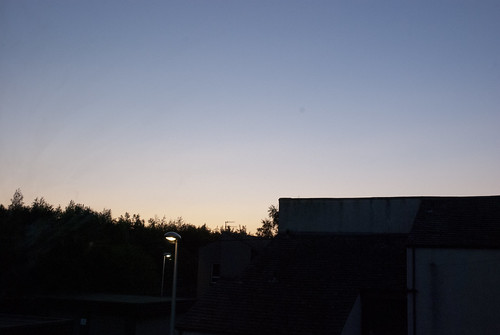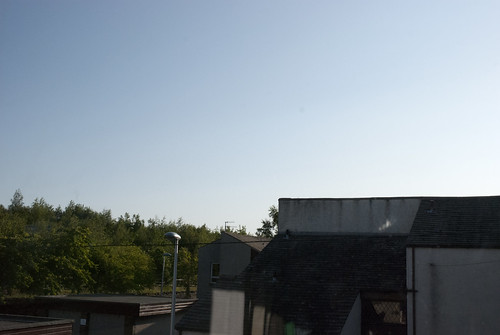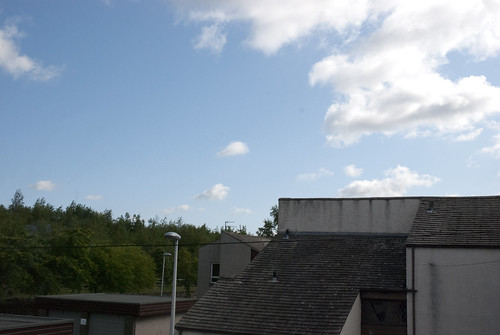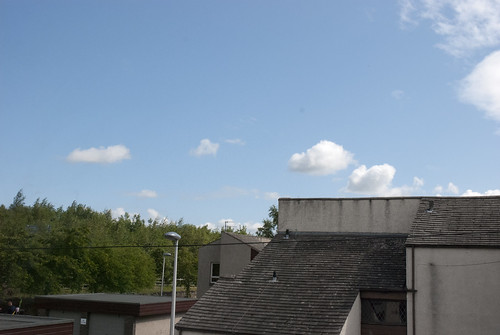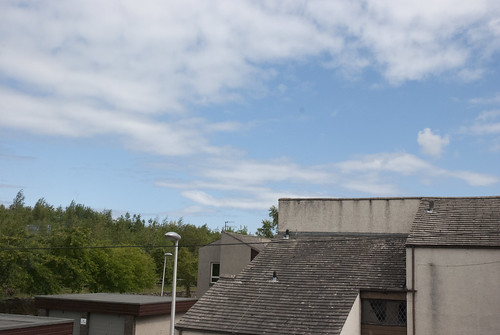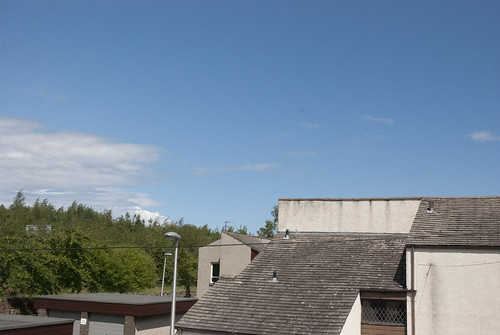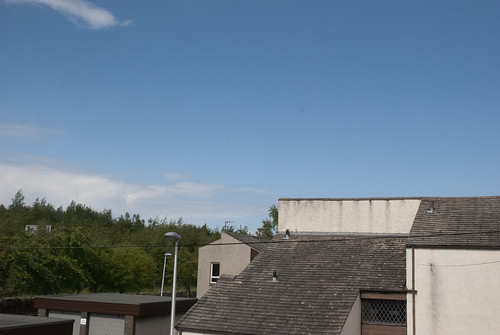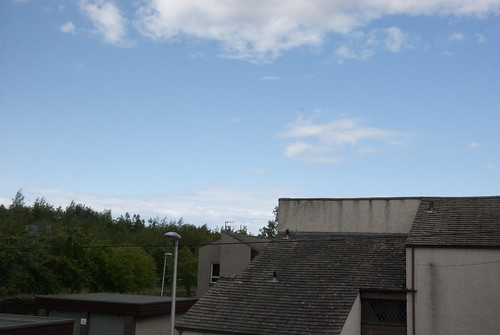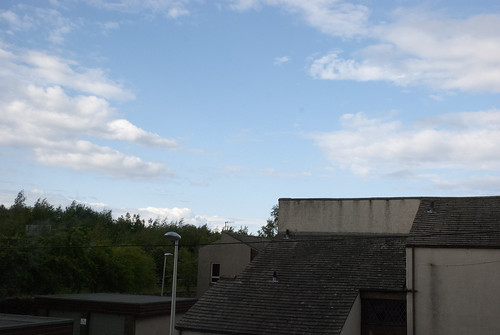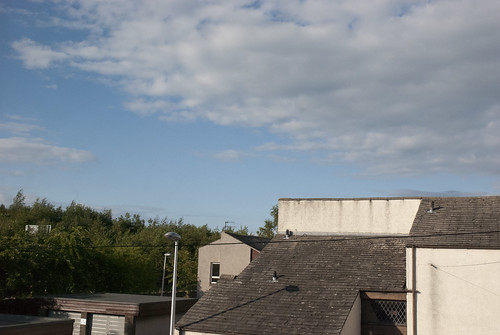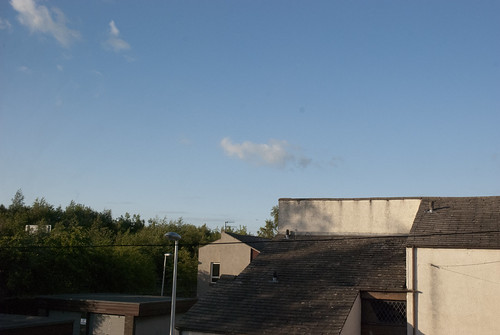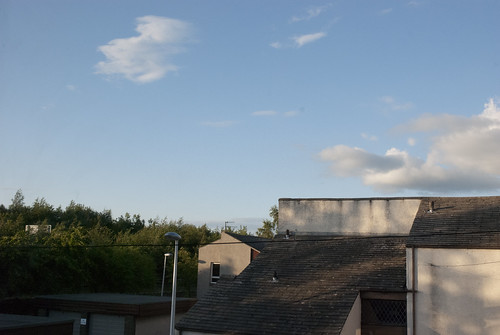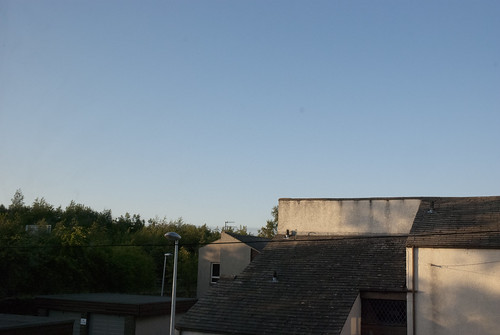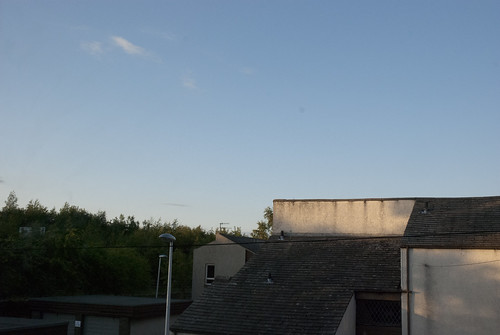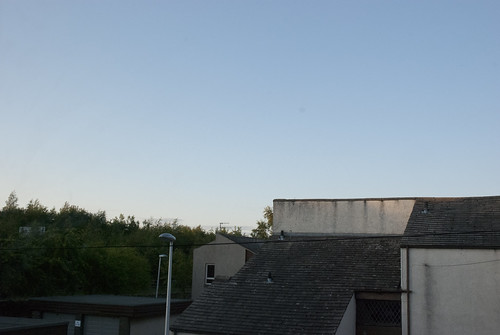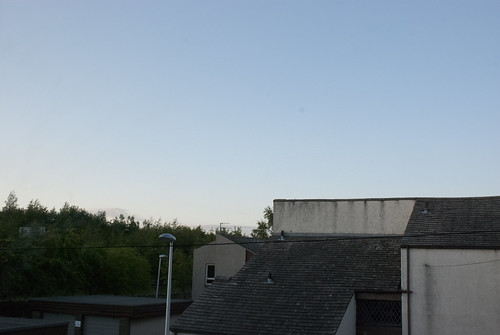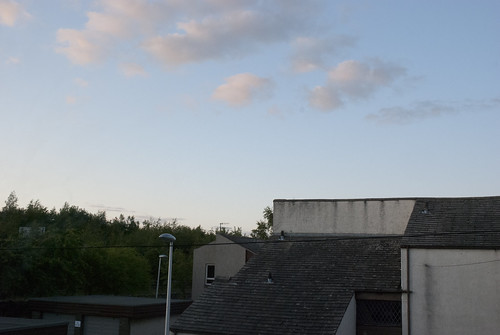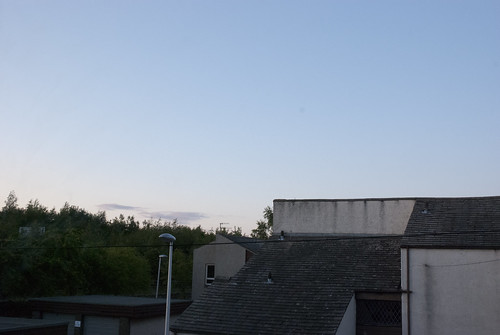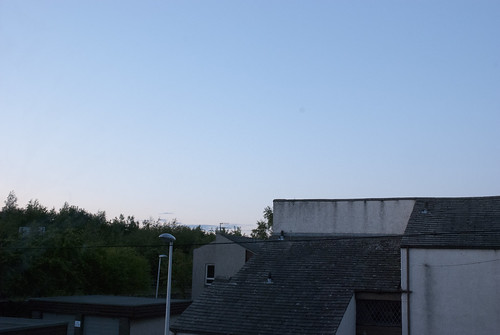What: The main brief of this exercise was to take three photographs of the same subject where the interior and exterior light levels would be the same and where the interior was light with a tungsten bulb. The brief then asked for measurements of different parts of the room for light levels and exposure details and then asked for the three photographs to be taken where the White Balance was changed at each exposure from Auto to Daylight to Tungsten.
Where: In a main room of the house
When: Just as the sun was starting to set and I decided that the light levels were the same.
How: The first thing I did was set my camera ISO to 100 as instructed in the exercise and after setting up the lamp I moved around the room measure the light levels and noting the exposure details at maximum and minimum aperture.
I also looked out of the window and then back at the bulb to see how the colours would be affected by the differing light. I found that looking back into the room that the bulb was a very deep warm yellow, almost orange hue and that it was very bright. Looking back out of the window I noted that the sky was a cold blue hue and that the shadows in the sky were dim and again cold.
What I found first of all was that at ISO 100 with a 11-16mm lens that it was almost impossible to achieve a suitable situation where I could shoot in those conditions at hand held speed. It would be theoretically possible to hand hold at a higher ISO or where the shutter speed was a higher value than the focal length of the lens, but it would still be a bit precarious. On the whole at ISO 100 a tripod mount is recommended.
Looking directly at the lamp an aperture of f/2.8 had an exposure speed of 1/45 of a second
Looking directly at the lamp an aperture of f/22 had an exposure speed of 3 seconds
Looking into a corner away from the lamp an aperture of f/4 had an exposure speed of 3 seconds
Looking into a corner away from the lamp an aperture of f/13 had an exposure speed of 30 seconds
Looking into the darkest corner away from the lamp an aperture of f/4 had an exposure speed of bulb, the camera was unable to specify as suitable speed.
I then set the camera up pointing at the lamp and out of a window to the last of the light and photographed the three exposures as instructed in the exercise.
Interior Exterior – Auto White Balance
D80,Aperture f/4, Shutter Speed 1/30 sec, ISO 100, 16mm (35mm equivalent 24mm), Pattern Metering Mode, Auto White Balance, Tripod Mounted, 11-16mm lens
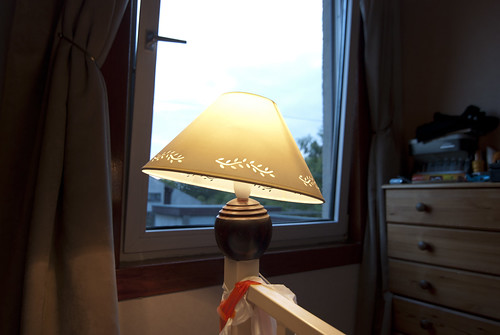
The sky has taken on a cold blue hue and a lot of the detail in the sky has been lost as it has become a blown out white shape.
Interior Exterior – Daylight White Balance
D80,Aperture f/4, Shutter Speed 1/30 sec, ISO 100, 16mm (35mm equivalent 24mm), Pattern Metering Mode, Daylight White Balance, Tripod Mounted, 11-16mm lens
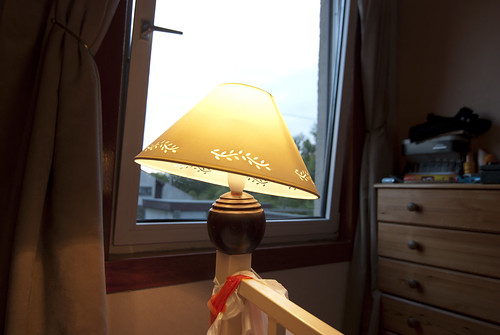
The sky has taken on a slight less cold blue hue but it probably we most accurate colour representation of the three images and a lot of the detail in the sky has been lost as it has become a blown out white shape. The lamplight has taken on a warmer yellow hue
Interior Exterior – Tungsten White Balance
D80,Aperture f/4, Shutter Speed 1/30 sec, ISO 100, 16mm (35mm equivalent 24mm), Pattern Metering Mode, Tungsten White Balance, Tripod Mounted, 11-16mm lens
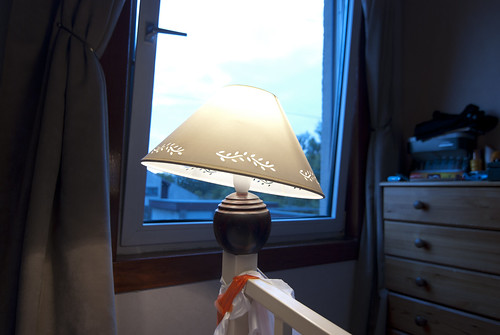
The sky has taken on a very cold blue hue, some of the detail in the sky like the difference between the sky and the clouds remain but a lot of it has still been lost as it has become a blown out white shape. The lamp light is straw white and has a normal hue and tone for the tungsten bulb.
Exercise 36 Tungsten and Fluorescent lighting – Part Two
What: The main brief of this exercise was to take a number of pairs of interior photographs where the interior light was light with a CFL or Fluorescent bulb. The brief then asked for the pair of photographs to be taken where the White Balance was changed at each exposure from Auto to Fluorescent.
Where: In the house
When: Just as the sun had gone down and it was dark.
How: The first thing I did was set my camera up on a tripod to allow me to change the camera settings without changing the composition of the photograph. I then moved through the house looking for areas light by CFL and Fluorescent bulbs.
Louis.
There pair of photographs were light by a single CFL bulb which was above and to the right of the subject. I noted that even at ISO 1250 I was not getting a lot of light from the bulb.
Louis – Auto White Balance – Single CFL Bulb
D80,Aperture f/5.6, Shutter Speed 1/3 sec, ISO 1250, 38mm (35mm equivalent 57mm), Pattern Metering Mode, Auto White Balance, Tripod Mounted, 18-70mm lens
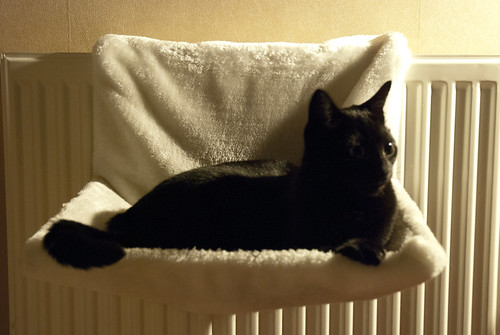
Louis – Fluorescent White Balance – Single CFL Bulb
D80,Aperture f/5.6, Shutter Speed 1/3 sec, ISO 1250, 38mm (35mm equivalent 57mm), Pattern Metering Mode, Fluorescent White Balance, Tripod Mounted, 18-70mm lens
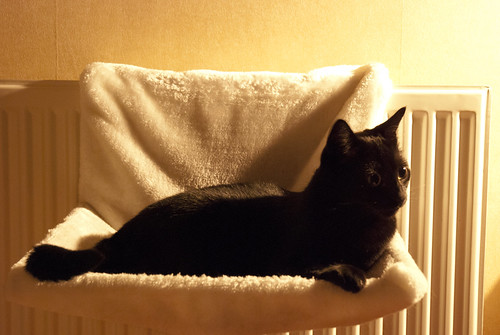
I can see that using the Fluorescent white balance produces a warm image with less detailed contrast, the Auto white balance again produces a straw white neutral white balance.
Room Study
The bed and objects are light with two CFL bulbs above and to the rear of the subjects. Again I had to use a tripod as there was little light coming from the CFL bulbs
Room Study – Auto White Balance – Two CFL Bulbs
D80,Aperture f/5.6, Shutter Speed 1/15 sec, ISO 1250, 24mm (35mm equivalent 36mm), Pattern Metering Mode, Auto White Balance, Tripod Mounted, 18-70mm lens

Room Study – Fluorescent White Balance – Two CFL Bulbs
D80,Aperture f/5.6, Shutter Speed 1/15 sec, ISO 1250, 24mm (35mm equivalent 36mm), Pattern Metering Mode, Fluorescent White Balance, Tripod Mounted, 18-70mm lens
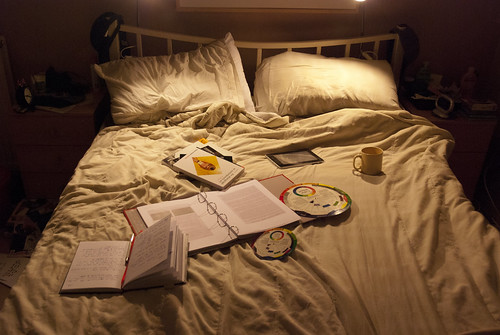
Again the Fluorescent white balance has produced a warm red tinted hue while the Auto White Balance has been neutral.
Drinks Shelf light from above and in front from a single fluorescent strip bulb light.
Drinks Shelf – Auto White Balance – Single Fluorescent Bulb
D80,Aperture f/27, Shutter Speed 1.5 sec, ISO 1250, 31mm (35mm equivalent 46mm), Pattern Metering Mode, Auto White Balance, Tripod Mounted, 18-70mm lens
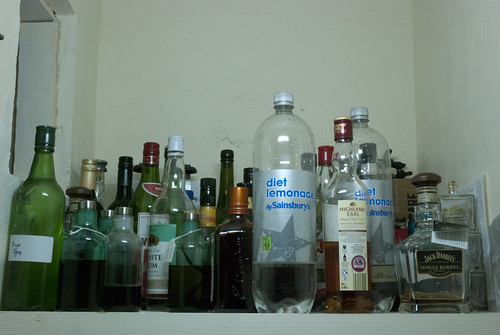
Drinks Shelf – Fluorescent White Balance – Single Fluorescent Bulb
D80,Aperture f/27, Shutter Speed 1.5 sec, ISO 1250, 31mm (35mm equivalent 46mm), Pattern Metering Mode, Fluorescent White Balance, Tripod Mounted, 18-70mm lens
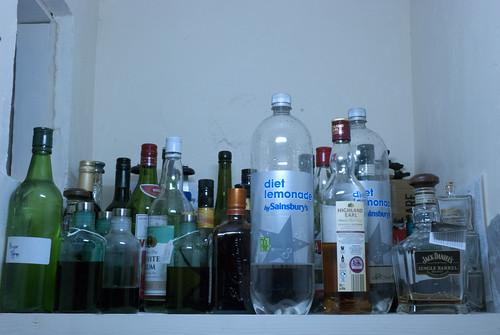
I was surprised to see that under a normal Fluorescent bulb rather than a CFL bulb that the light produced was a cold bulb light and that even under the Auto white balance the image took on a cold tint to it. Using the fluorescent white balance produced an even colder image as the light was bluer and colder.
I have learned that there is a great difference in the colouration of artificial light and that even the same white balance can produce differing results due to the light source. Until this exercise this was something I did not know and I thought that all fluorescent light produced the same results through the fluorescent white balance; this is something that I will have to look out for when using artificial lighting.
